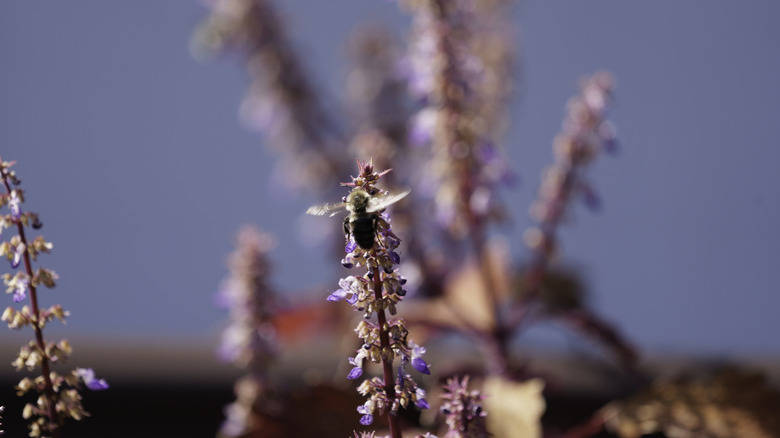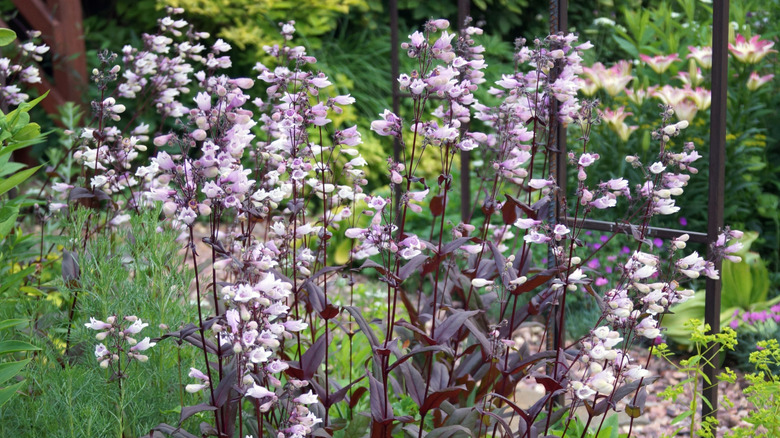The Purple Perennial That Attracts Pollinators And Thrives In The Heat
Pollinators are special visitors to have in your yard or garden, and it can feel good to support them and the ecosystem at large with the help of flowering plants. It's also important to plant the right varieties that will resist whatever conditions your climate might throw your way. Whether you live in a hotter climate or are experiencing the heat of summer, it can be challenging to grow flowering plants that tolerate soaring temperatures. Fortunately, there are heaps of blooming annual flowers that can take the summer heat. If you're looking for a purple flowering plant that both attracts pollinators and withstands the heat, consider adding the perennial beardtongue (Penstemon digitalis) to your outdoor spaces.
Also nicknamed "Blackbeard" or "foxglove beardtongue," beardtongue plants are native perennial plants known for their tubular and lipped flowers that look similar to foxglove. These typically bloom throughout the late spring and early summer months, and they may range in color between purple/lavender and white. Beardtongue flowers aren't only beautiful to see in the yard, but they also help attract numerous pollinators, including bees, butterflies, and hummingbirds. The plant might even attract songbirds. Aside from its attractive flowers, though, the plant is notable for its dark purple leaves that can add some aesthetic appeal to your garden even when it's not in bloom. Beardtongues are considered suitable for USDA hardiness zones 3 through 8, and are even regarded as both deer- and rabbit-resistant.
Tips for planting and growing beardtongue in your yard or garden
Thanks to both its heat and drought tolerance, beardtongue is relatively easy to grow. However, before planting these perennials in your yard or garden, it's important to adhere to a few rules for the best results. The biggest rule is to plant beardtongue in a spot that receives full sun for at least six hours per day. These plants aren't picky about the type of soil they're planted in, but well-draining soil is considered best. And while beardtongue can survive in dry conditions, the plants do need moist soil when they are first planted and until they are established.
Be aware that beardtongue plants flourish quickly, and they can grow between 2 and 4 feet tall, although some may reach up to 5 feet tall. These can be eye-catching plants to have outside, but they will take up space. For this reason, you will want to consider the best layout for your garden and plan accordingly. Also, if your main goal is to attract pollinators to your outdoor space, know that it's helpful to plant a variety of flowering plants and not just beardtongue alone. Keep in mind that some of the best plants for your pollinator garden are those that are native and produce a range of differently colored flowers.

